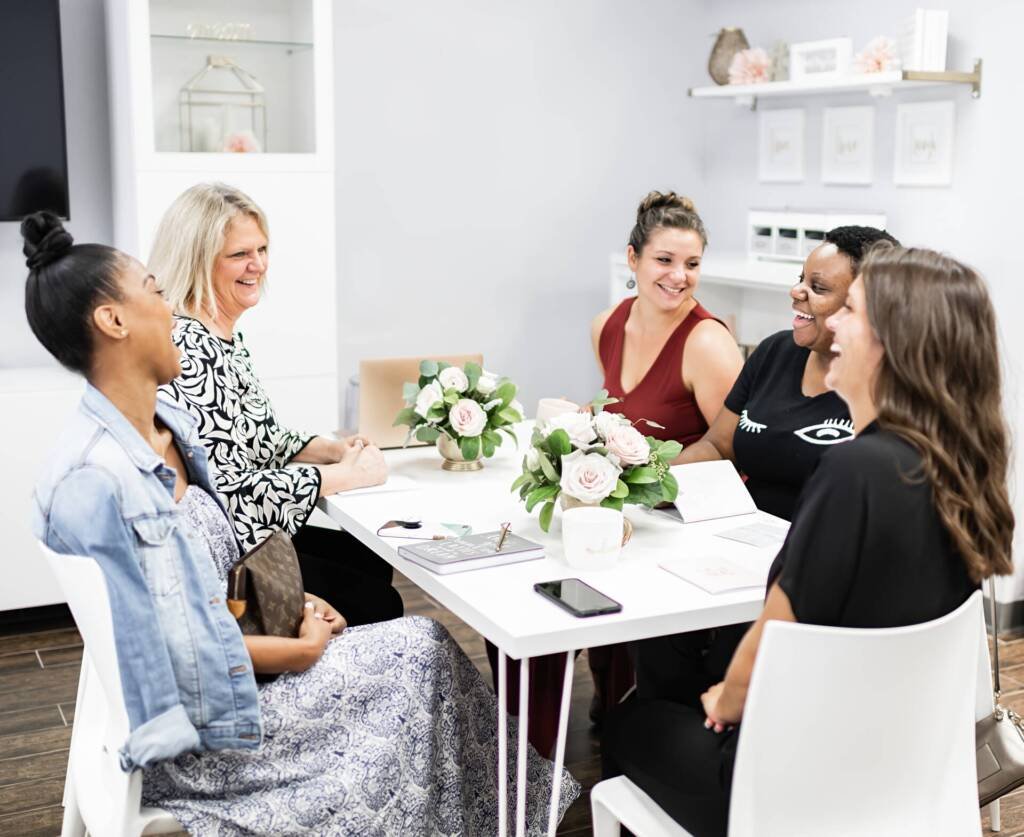Feeling safe with your identity at work can transform your career—but getting there is not always easy. For many LGBTQ+ professionals, workplace environments can feel empowering yet challenging due to the balancing act between authenticity and professional boundaries. While efforts toward diversity and inclusion have gained momentum, plenty of work remains to ensure all professionals feel genuinely accepted for who they are.
A 2023 study by the Human Rights Campaign highlights that 46% of LGBTQ+ workers remain closeted at work, citing a fear of discrimination or being treated differently. This statistic underscores the importance of fostering a workplace atmosphere that supports identity safety.
Table of Contents
This blog post is a practical guide for LGBTQ+ professionals and allies alike. We’ll explore what identity safety means, offer actionable strategies for setting boundaries while staying authentic, and share tips for promoting inclusivity. Whether navigating your identity at work or seeking to create a safer space for others, this guide will help you take meaningful steps toward positive change.
Understanding Identity Safety at Work

What Does Identity Safety Mean?
Identity safety in the workplace refers to an environment where individuals feel secure expressing their authentic selves without fear of judgment, discrimination, or exclusion. For LGBTQ+ professionals, this could mean openly discussing their partner without hesitation in casual conversations or feeling confident that being honest about their gender identity won’t impact career progression.
Why It’s Important
When people feel safe with their identities, they can devote their entire energy to their work, leading to stronger job performance and greater overall well-being. Conversely, an unsafe workspace can lead to stress, isolation, and decreased productivity. The benefits of fostering inclusivity aren’t just individual—they ripple across entire teams and organizations.
Challenges LGBTQ+ Professionals Face
- Microaggressions: Subtle comments or actions that unintentionally exclude or demean, such as “You don’t look gay.”
- Lack of representation: More role models in leadership can make it easier for individuals to envision their own career growth.
- Fear of discrimination: From inappropriate jokes to overt hostility, many LGBTQ+ professionals worry about facing backlash for being authentic.
Creating an environment where identity safety is the norm, not the exception, is critical to achieving workplace inclusivity.
The Role of Allies and Workplace Culture

The Power of Allies
Allies play a crucial role in fostering inclusivity. A supportive ally actively advocates for marginalized colleagues by challenging stereotypes, promoting diversity initiatives, and speaking up against discriminatory behavior. For LGBTQ+ professionals, allies are invaluable in amplifying their voices and reinforcing a culture of acceptance.
Initiatives That Drive Change
Organizations at the forefront of inclusivity often implement initiatives like:
- Employee Resource Groups (ERGs): Safe spaces where LGBTQ+ employees and allies can connect and collaborate.
- Pride Month Celebrations: Visible displays of support, such as hosting webinars or organizing events for Pride Month.
- Diversity Training Programs: Workshops designed to improve awareness, sensitivity, and allyship skills.
The collective impact of these efforts fosters a workplace culture that values and protects diversity.
How Allies Can Support LGBTQ+ Colleagues

- Actively use inclusive language (e.g., sharing personal pronouns).
- Educate themselves about LGBTQ+ experiences and challenges.
- Stand as an advocate by calling out inappropriate behaviors or language.
Allies can make a significant difference by prioritizing meaningful action over performative gestures.
Setting Healthy Boundaries Without Losing Authenticity

Balancing authenticity and privacy is a deeply personal decision for LGBTQ+ professionals. It’s okay to feel conflicted about sharing certain aspects of your identity. What’s most important is finding a balance that aligns with your values and comfort level.
Step-by-Step Advice
1. Assess Your Comfort Levels: Ask yourself, “How much am I comfortable sharing, and with whom?”
2. Decide When and Where to Share: Test the waters with trusted colleagues before sharing more widely.
3. Communicate Your Boundaries: Be clear about what you’re open to discussing—and what you’re not.
- Example response: “I appreciate your curiosity, but I prefer to keep my personal life private.”
4. Practice Responses: Prepare a few go-to phrases for uncomfortable or inappropriate questions.
- An example response to intrusive questions about your gender identity could be, “I prefer not to get into personal details at work, but thanks for understanding.”
Establishing boundaries can empower you to stay true to yourself while maintaining control over your professional interactions.
Building a Network of Support

Community is a lifeline when navigating identity safety at work. Connecting with others who share similar experiences ensures that no one feels isolated.
The Value of Networking
- It gives LGBTQ+ professionals a platform to share advice and insights.
- Provides emotional support when tackling workplace challenges.
- Opens doors for collaborations, mentorship, and professional growth.
Online and Local LGBTQ+ Communities
- Out & Equal: An organization with programs and initiatives designed to promote equality in the workplace.
- LinkedIn LGBTQ+ Groups: A hub for LGBTQ+ professionals to connect and engage in meaningful discussions.
Whether building relationships within your organization or through external communities, your network can serve as a source of strength and guidance.
Workplaces Leading the Way in LGBTQ+ Inclusion

Organizations committed to diversity earn recognition and set benchmarks for others, creating inclusive workplaces and inspiring change. The Human Rights Campaign’s Corporate Equality Index highlights companies excelling in LGBTQ+ inclusivity and celebrates those with equality-driven policies. This index is a useful resource for identifying leaders in fostering equitable environments.
Some standout leaders in this space include:
- Salesforce, which provides robust support for LGBTQ+ employees through Employee Resource Groups (ERGs), inclusive healthcare benefits, and advocacy for equality beyond the workplace.
- Microsoft, a pioneer in embracing diversity and fostering a culture of equity and inclusion. The company has long implemented policies and initiatives celebrating diverse identities and ensuring all employees feel valued and supported.
If you’re looking for your next career opportunity, research a company’s inclusivity policies. Check for equality-based benefits like healthcare for LGBTQ+ employees or gender-affirming care and review their diversity-focused mission statements. These can help you see if the organization aligns with your values and creates a welcoming environment for all.
Practical Tips for Allies to Foster Inclusion

Allies, here’s how you can take meaningful action to create safer and more inclusive workplaces for everyone:
- Share your pronouns: By openly sharing your pronouns in introductions, email signatures, or meetings, you help normalize the practice and create a more welcoming environment for transgender and non-binary colleagues.
- Stand up to inappropriate jokes or comments: Speak out when you hear offensive or harmful remarks. Even a simple statement like, “That’s not okay,” can set a tone that such behavior won’t be tolerated.
- Advocate for inclusive hiring practices and policies: Push for recruitment processes that welcome diverse candidates and ensure company policies explicitly protect LGBTQ+ employees from discrimination.
- Participate in diversity and sensitivity training: These programs help you understand biases, build empathy, and learn how to foster a more inclusive workplace. Encourage others to join as well.
- Celebrate LGBTQ+ milestones: Acknowledge events like Pride Month, National Coming Out Day, or Transgender Day of Visibility in your workplace to show solidarity and appreciation for the LGBTQ+ community.
- Encourage leadership to prioritize inclusivity: Advocate for leadership to commit time and resources to LGBTQ+ inclusion efforts, such as creating ERGs (Employee Resource Groups) or revising outdated workplace policies.
- Educate yourself: Read allyship guides and resources from organizations like Out & Equal, GLAAD, or The Trevor Project to better understand the challenges LGBTQ+ individuals face and how you can help.
Remember, meaningful change doesn’t happen overnight—it starts with small, actionable steps. By consistently practicing allyship, you can contribute to a more accepting and supportive workplace for everyone.
Building Identity Safety is a Shared Responsibility

Feeling safe with your identity in the workplace isn’t just about systemic changes—it’s about individual empowerment, allyship, and creating meaningful communities of support. Whether you’re navigating your identity at work or championing inclusivity for others, progress comes from a shared commitment to acceptance.
Reflect on how you can contribute—whether by building connections, setting healthy boundaries, or improving workplace culture for the better. Your effort today will pave the way for a more inclusive tomorrow.
Looking for more inspiration? Explore resources from organizations like Out & Equal or join online forums to connect with advocates for workplace diversity and LGBTQ+ inclusion.
Together, we can build workplaces where everyone feels safe to be themselves.





